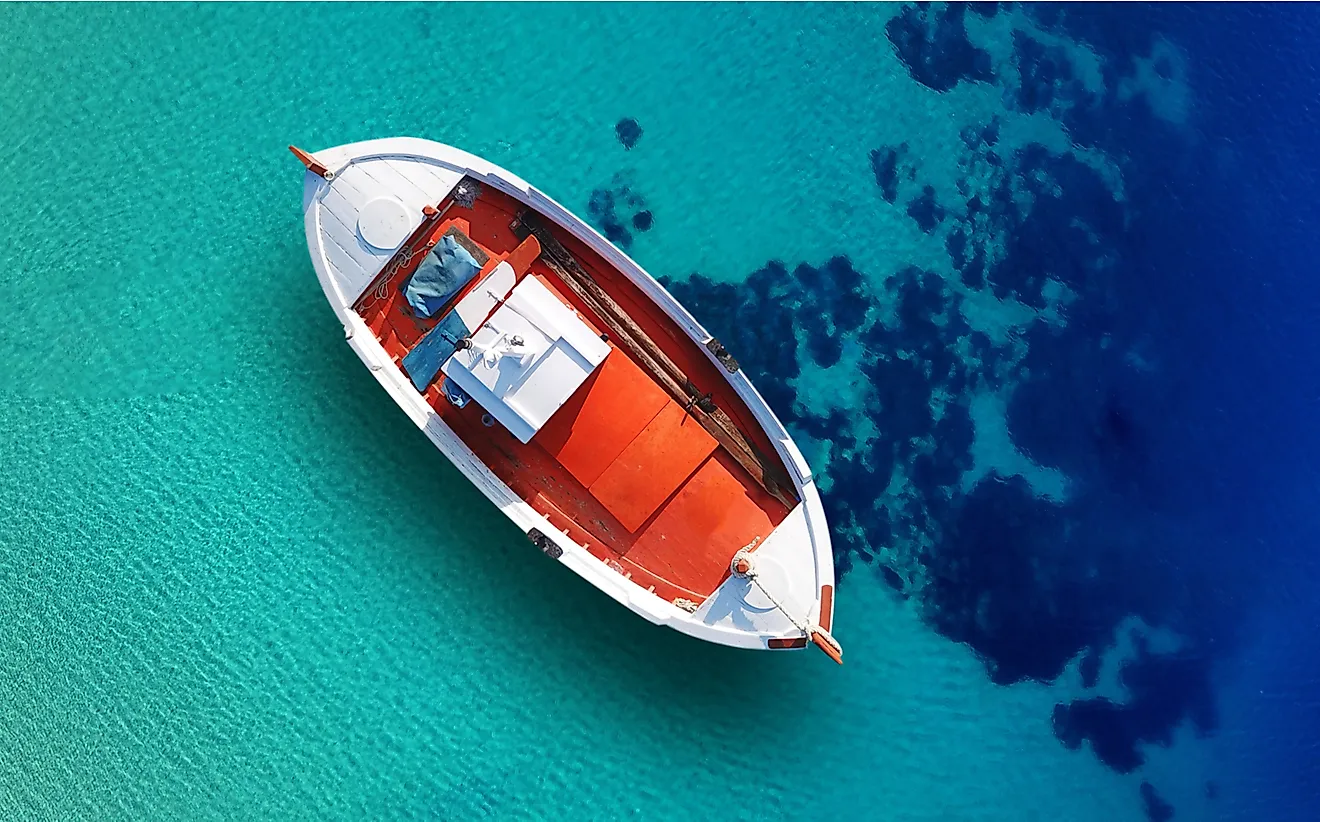Which Water Bodies Surround Greece?

Greece is a south-eastern European nation that is sometimes called the cradle of Western civilization. The country is bordered by four nations namely Bulgaria, Albania, Turkey, and North Macedonia. Its capital city is Athens which is also the largest city owing to its metropolitan area population of about three million. Greece is part of the European Union. This country is famous for its ancient Greek mythology where places such as Athens and Mount Olympus played significant roles. The water bodies that surround Greece are the Ionian Sea, the Aegean Sea, and Mediterranean Sea. The Sea of Crete and Thracian Sea are both a part of the Aegean Sea whereas the Aegean Sea is a part of the Mediterranean Sea. In total, Greece’s coastline is 8,498 miles long.
Aegean Sea
The Aegean Sea is located between Turkey and Greece with the sea forming part of the northern and eastern coastline of Greece. It covers an area of 83,000 square miles. One of the popular myths about the origin of its name is that the sea was named after the King of Athens who was called Aegeus. The southern Aegean is considered the most important part of the Aegean Sea because it is in this region that hosts most of the Greek Islands. Historically, the Aegean Sea acted as the cradle of ancient Greek civilization. Today, it serves as a trading route for global transport of goods. Consequently, some of the ports on the sea include Andros, Yerakini, Mitilini, Plomari, Ormos Aliveriou, Stratoni, and Ayvalik Harbour
Sea of Crete
The Sea of Crete, also known as the Cretan Sea or Sea of Candia, is part of the Aegean Sea. More specifically, it forms part of the southern side of the Aegean Sea. The Sea of Crete is the deepest part of the Aegean Sea with it getting as deep as over 10,000 feet. The area occupied by the Sea of Crete forms a flat, oval shape. Some of the ports located on the Sea of Crete include Perama, Limin Kos, Pakh Oil Terminal, and Sitia among others.
Thracian Sea
The Thracian Sea is part of the Aegean Sea situated between Turkey and Greece. This waterbody forms the eastern coastline of Greece. With reference to the Aegean Sea, it is located in the northernmost part of the sea. The main ports found on the Thracian Sea are Kavala and Alexandroupolis.
Ionian Sea
The Ionian Sea is located on the western coast of Greece and shares a boundary with Italy. Additionally, it is bounded by the Adriatic Sea to the north. The sea is triangular in shape occupying an area that begins from the Strait of Otranto and ends on an imaginary line running from Cape Tenaro in Peloponnese to Cape Passero in South Sicily. The Ionian Sea is believed to have been named after the hero of Illyria who was known as Ionio. Its length from north to south is 300 miles with its primary outflow being the Mediterranean Sea. Examples of ports found on the Ionian Sea are Preveza, Syracuse, Messina, Astakos, Pylos, Kerkyra, Taranto, and Catania.
Mediterranean Sea
The Mediterranean Sea is found on the southern side of Greece. It covers an area of 970,000 square miles. The deepest point in the Mediterranean Sea, Calypso Deep, is 17,280 feet and is located on the Ionian Sea. The Aegean Sea and the Ionian Sea are arms of the Mediterranean Sea whereas the Mediterranean Sea is a part of the Atlantic Ocean. Historically, this sea was an important trade center and cultural exchange center. As a result, the Mediterranean Sea helps in understanding the genesis and development of the modern world cultures.











